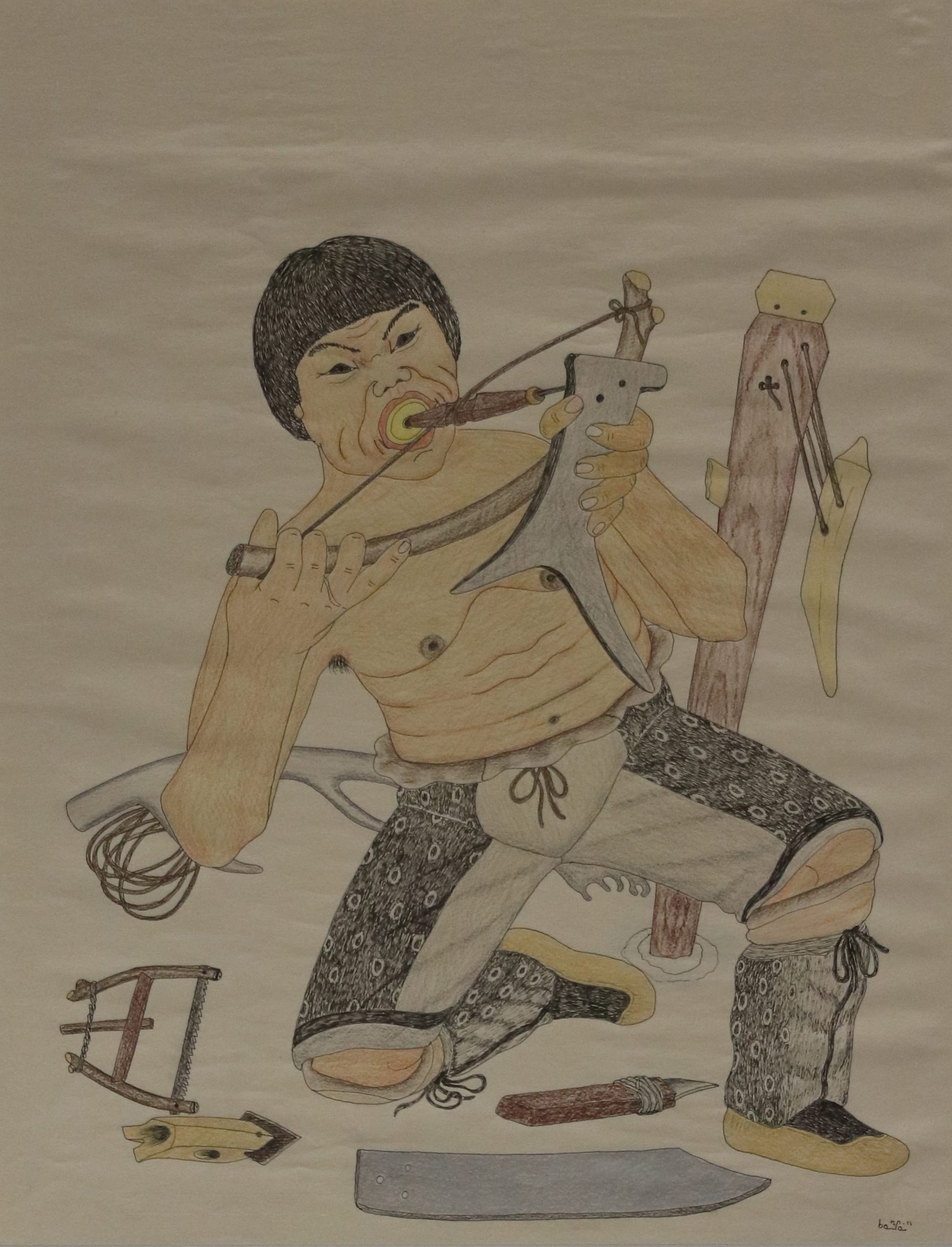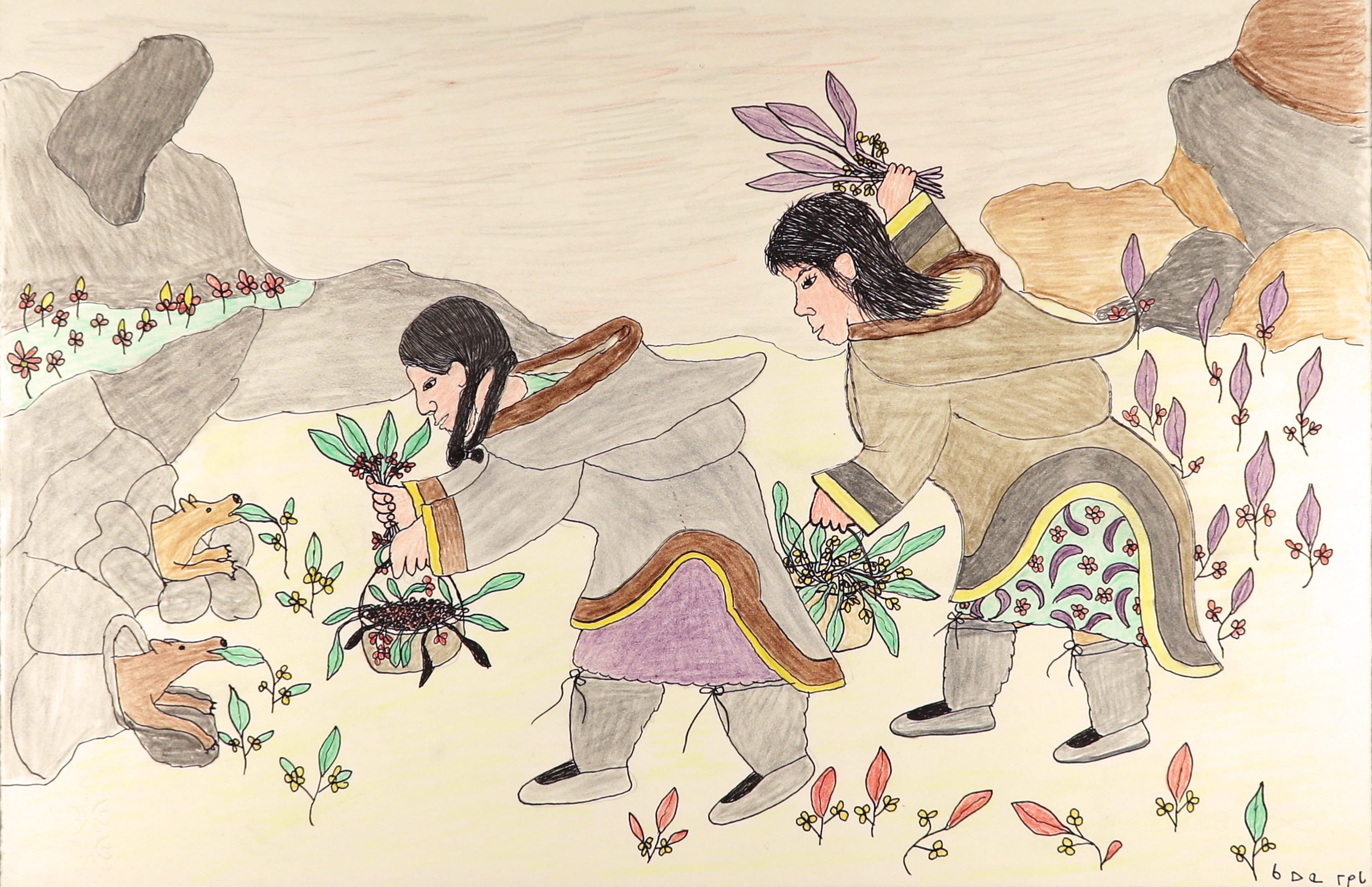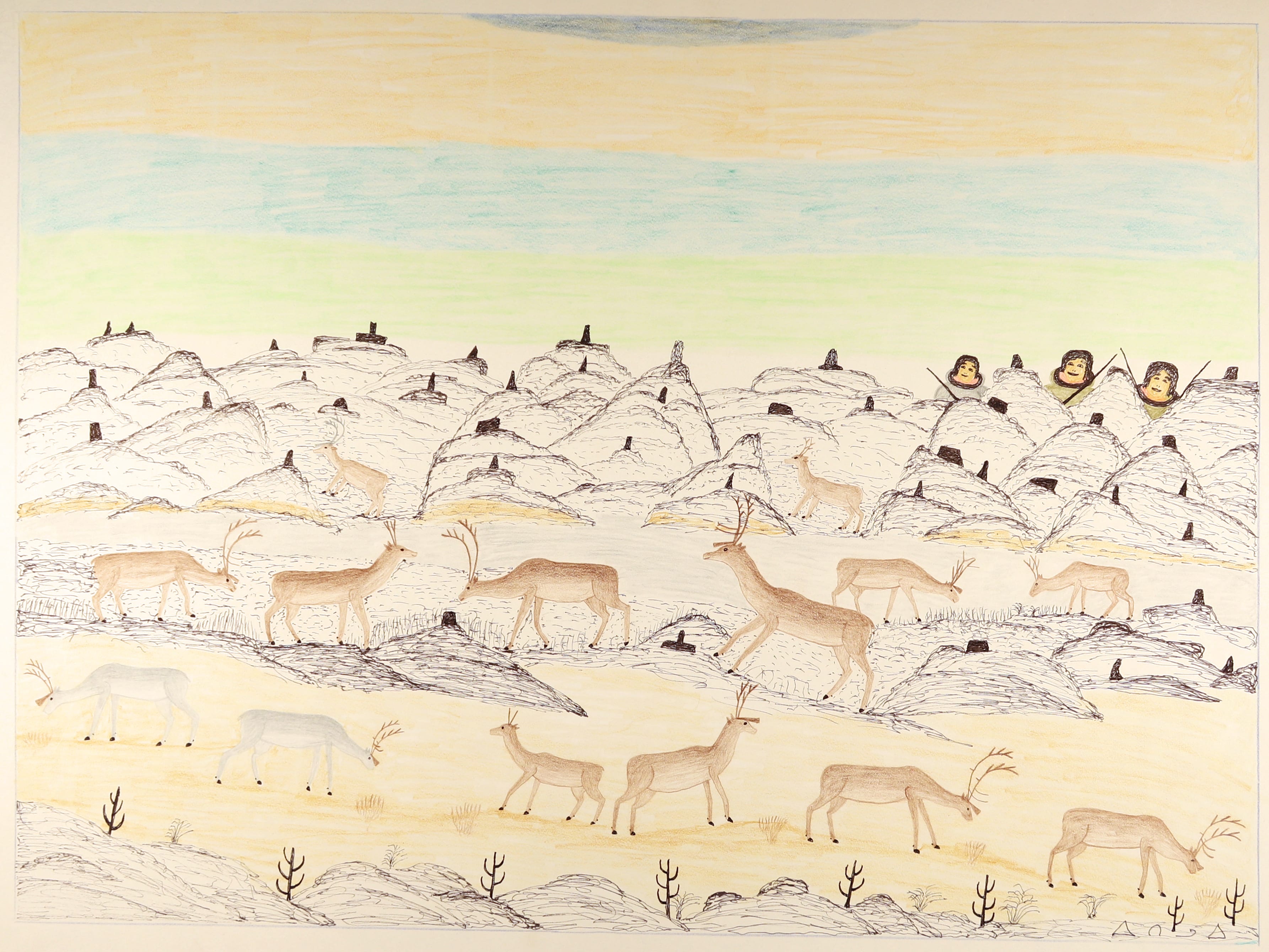Knowledge.
Like Inuit, Yupiit share knowledge to maintain communal ties and benefit future generations. Elders urge young people suffering from poverty, alcoholism, and other challenges under settler colonialism to strengthen their minds by learning how to use the various Indigenous technologies represented in this gallery.
Big Fish, Little Fish
1992
Qavavau Manumie (Inuk, b. 1958)
Color pencil, marker on paper
Museums Collections, Gift of Frederick & Lucy S Herman
Reproduced with the permission of Dorset Fine Arts
Using the Bow Drill
1991 – 1992
Kananginak Pootoogook (Inuk, 1935 – 2010)
Ink, crayon and graphite on paper
Museums Collections, Gift of Frederick and Lucy S. Herman
Reproduced with the permission of Dorset Fine Arts
Mingqaaq (coiled basket)
Elizabeth Amos Spud (Yup’ik)
Dyed and un-dyed grass
Museums Collections, Gift of Mabel & Harley McKeague
While in her early twenties, Elizabeth Amos Spud designed her first basket, seen here. Colorful insects reflect the ecological diversity of her home, Mekoryuk village on Nunivak Island, thirty miles from mainland Alaska. Because Yup’ik children learn by watching, Spud probably developed her skills by observing her mother, Isabelle Amos, an accomplished basket maker. This generational sharing of knowledge is vital to the continuation of Yup’ik culture.
A Highlight Essay by Sara McNamara
Women Berrypicking
1983-1984
Qaunaq Mikkigak (Inuk, b. 1932)
Color pencil on paper
Museums Collections, Gift of Frederick & Lucy S Herman
Reproduced with the permission of Dorset Fine Arts
While the Arctic is stereotypically imagined as a cold, barren landscape, Women Berrypicking illustrates the fecundity of summer. Inuit harvest berries from late summer to mid fall and associate the fruit with the celebration of abundance and warmth. Women learn to pick berries as children by watching their parents, reinforcing ties to family and the land. As Inuit communities increasingly depend on government-provided goods and a wage economy, berrypicking provides a welcome distraction from daily struggles under settler colonialism. At the same time, Inuit women have observed changes in the berry season that signal climate change. By carefully depicting details in the berries, Mikkigak demonstrates Inuit women’s intimate, specialized knowledge of the plants.
Hunters Watching Caribou
c. 1969-1970
Etidlooie Etidlooie (Inuk, 1910 – 1981)
Ink and crayon on paper
Museums Collections, Gift of Frederick & Lucy S Herman
Reproduced with the permission of Dorset Fine Arts
In Hunters Watching Caribou, three hunters hide behind snow piles as they watch the caribou in the foreground. The small black cairns, or mounds of stones, placed atop many of the snow piles represent an Inuit hunting technique. The caribou mistake the cairns for human heads, prompting them to flee towards the ocean. Hunters wait in kayaks by the shore, ready to spear the caribou once they swim out. We might imagine that the figure in the nearby drawing by Harry Ilkalukjuak, Hunting from a Kayak, is awaiting the caribou’s arrival. Etidlooie captures the collective spirit of Inuit activities, as Inuit work together to solve problems and share the results of their hard work with the community.
Etidlooie drew prolifically in the final years of his life. However, according to his second wife, Kingmeata, he identified foremost as a hunter. Through drawing, Etidlooie recorded his knowledge of vital Inuit lifeways that came under pressure due to Canadian policies of assimilation.
Mother and Child in Landscape
c. 1960-1973
Peter Pitseolak (Inuk, 1902 – 1973)
Graphite and crayon on paper
Museums Collections, Gift of Frederick & Lucy S Herman
Reproduced with the permission of Dorset Fine Arts
Pitseolak’s drawing features a mother and child in a lush, green landscape. In addition to portraying essential family bonds, the drawing calls attention to Arctic seasonal changes, challenging stereotypical images of the region as an icy, lifeless wasteland. In the upper right-hand corner, Pitseolak has included an inukshuk, a human-made stone sculpture used to mark sites of spiritual and practical significance for Inuit travelers.







